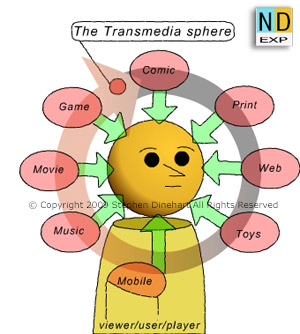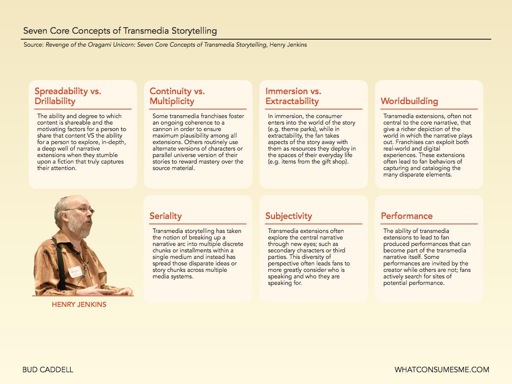Here’s the second half of my list of applied storytelling’s top growth areas in 2009. See yesterday’s entry for the first half.
-
- More business and cultural leaders recognize that storytelling skills are crucial in the 21st century. Story practitioners Lori Silverman and Karen Dietz are seminal evangelists for the idea that a millennial individual needs storytelling skills — that storytelling skills must be a core business competency. They’ve written new article that encompasses this belief. Others are picking up this battle cry. Gary Vaynerchuk, for example, writes in his book Crushit! that “storytelling is by far the most underrated skill in business.” James R. Gaines, who was the top editor of Time, Life, and People magazines and now works at Flyp, has learned from his new digital experience that it’s “the crafts and the art of storytelling … that need updating most urgently for the digital world.”
- Though PowerPoint-style presentations still dominate by far, more presentation experts call for storytelling in presentations. The slide-sharing site SlideShare held its first “Tell Me a Story” presentation competition, and while I felt that the winning entries did not tell stories as well as I would have liked, the idea of the competition was a step in the right direction. Slides themselves (a.k.a. PowerPoint) may be the biggest impediment to storytelling in presentations. Look at the superb TEDTalks series, in which slides are often not used, and when they are, they take a back seat to the presenter’s storytelling and prowess in delivering a talk. The blog Presentation Zen cites this talk by Hans Rosling, in which the speaker uses slides, but integrates the statistics on those slides into dramatic, energetic, suspenseful storytelling that builds to a wonderful climax. (see below)
-
- Influenced by the huge role storytelling played in the 2008 US presidential election, observers are increasingly scrutinizing “the narrative,” as presented by politicians, the media, and others. My storytelling colleague Paul Costello chronicled the role of storytelling in his book The Presidential Plot. Since then, observers have scrutinized “the narrative” of America political life and who controls it. The Daily Show‘s Jon Stewart rails against what the media has done to the narrative. Others worry that President Obama has lost control of the narrative that made him so successful in 2008.
-
 Transmedia storytelling increasingly becomes marketing’s darling, especially for marketing entertainment. Transmedia is by no means new, but I have never seen the degree of buzz about it as I have this year. Just in the pasty few weeks, buzz has been tremendous. Daniel Prager wrote on The Ocean Agency’s Blog: “You will be hearing more and more about “transmedia” in the coming months, as major brands are testing the waters creating advertising and marketing storylines that exist across multiple platforms and networks.” (The blog is also the source of the Transmedia sphere diagram copyrighted by Stephen Dinehart). Much re-tweeted recently has been transmedia academician Henry Jenkins’s Seven Core Principles of Transmedia Storytelling and Bud Caddell’s easily referenced visual thereof (you can download it here.) And of transmedia storytelling, Allison Norrington writes on Wired.co.uk: “Authors are increasingly ‘curators,’ ‘story architects,’ or ‘experience designers’ and are looking toward the creation of storyworlds rather than a linear stream.”
Transmedia storytelling increasingly becomes marketing’s darling, especially for marketing entertainment. Transmedia is by no means new, but I have never seen the degree of buzz about it as I have this year. Just in the pasty few weeks, buzz has been tremendous. Daniel Prager wrote on The Ocean Agency’s Blog: “You will be hearing more and more about “transmedia” in the coming months, as major brands are testing the waters creating advertising and marketing storylines that exist across multiple platforms and networks.” (The blog is also the source of the Transmedia sphere diagram copyrighted by Stephen Dinehart). Much re-tweeted recently has been transmedia academician Henry Jenkins’s Seven Core Principles of Transmedia Storytelling and Bud Caddell’s easily referenced visual thereof (you can download it here.) And of transmedia storytelling, Allison Norrington writes on Wired.co.uk: “Authors are increasingly ‘curators,’ ‘story architects,’ or ‘experience designers’ and are looking toward the creation of storyworlds rather than a linear stream.”
 The next big question becomes, how will storytelling fare on Web 2.0’s successor, the Real Time Web? In the age of Twitter, it has become increasingly clear, especially in the last week as Google has introduced real-time search, that the Real Time Web will be the successor to Web 2.0. What provoked me to consider how the Real Time Web might affect storytelling was this short clip of storyteller Cathy Brooks in which she talks about businesses not understanding the power of the Real Time Web. I would like to pursue this issue further and learn more about the challenges of storytelling on the Real Time Web. In the meantime, the Real Time Web aids me tremendously in discovering the many items about storytelling that I write about in this blog. On the other hand, the fact that many others are using real-time tools means that the Real Time Web very often “scoops” me and alerts readers to storytelling goodies before I can blog about them. Thus my adaptation becomes trying to offer some synthesis and analysis about storytelling content since I am unlikely to be the first to bring this content to my readers.
The next big question becomes, how will storytelling fare on Web 2.0’s successor, the Real Time Web? In the age of Twitter, it has become increasingly clear, especially in the last week as Google has introduced real-time search, that the Real Time Web will be the successor to Web 2.0. What provoked me to consider how the Real Time Web might affect storytelling was this short clip of storyteller Cathy Brooks in which she talks about businesses not understanding the power of the Real Time Web. I would like to pursue this issue further and learn more about the challenges of storytelling on the Real Time Web. In the meantime, the Real Time Web aids me tremendously in discovering the many items about storytelling that I write about in this blog. On the other hand, the fact that many others are using real-time tools means that the Real Time Web very often “scoops” me and alerts readers to storytelling goodies before I can blog about them. Thus my adaptation becomes trying to offer some synthesis and analysis about storytelling content since I am unlikely to be the first to bring this content to my readers.
What growth areas have I left off? Which areas on the list would you have left off?
